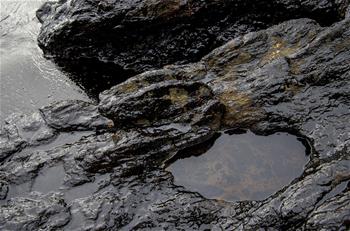Articles
A Treasurer’s Worst Nightmare: Inside the BP Oil Spill
- By Nilly Essaides
- Published: 5/13/2016

Former BP America treasurer Michael Mroz had just been promoted from assistant treasurer in 2010 when the Deepwater Horizon oil spill occurred in the Gulf of Mexico. In the days that followed, the company's primary liquidity source, the commercial paper (CP) market, became largely inaccessible as the severity of the situation became better understood. Mroz needed to draw on his deep knowledge of the oil industry, as well as his financial and leadership acumen to pull his team together and support the company's global efforts to weather the storm.
Following the incident, treasury went into overdrive. "We were working locally and globally 24/7," he recalled. "It was an opportunity to showcase our collective technical and managerial expertise."
Leading up to the disaster, BP relied heavily on CP funding for its day-to-day liquidity needs. Cash balances were pooled globally on a daily basis and were kept to a minimum. Simply put, on days when the company had a global net inflow of cash, a portion of BP's CP would be bought back and on days when there was a global net outflow, some additional paper would be issued. "We paid a very competitive rate versus United States Treasuries," Mroz said. Suddenly, BP found itself facing a very anxious customer base. "It got to a point in June of 2010 that we were basically considered junk. We had very little access to liquidity via our traditional means," he said. It was a treasurer's worst nightmare.
BP resorted to an aggressive asset divestment program to ensure that adequate liquidity was available to weather the storm. "We had to ensure we paid our bills on time and honored our commitments to keep our supplier base from getting overly nervous," he said. "We needed to control the anxiety in the marketplace." It was important that not a single payment was late or charged incorrectly. Any suggestion that the company was in financial distress could have had an adverse operational impact. At the same time, Mroz was also charged with contributing to the company's requirement to put together a $20 billion trust fund designed to pay out claims resulting from the oil spill.
BP emerged from the crisis a changed company. Not only did it shrink in size, but it altered the way it managed liquidity. Instead of essentially betting the house on CP, it began maintaining a large liquidity buffer. The size of that buffer is determined by sophisticated stress testing and analytics.
The trial by fire helped teach Mroz some management lessons as well. "Effective leaders need to delegate but also set up an effective infrastructure of shared accountability and responsibility," he said. While he makes sure his staff has the leeway to make decisions and take action, he also wants to ensure his direct reports feel comfortable asking for help when needed. "You have to create an environment where your direct reports and their reports recognize when things need to be escalated and brought to your attention. There's nothing worse than a surprise," he said. "It should always be okay to ask a question."
Looking back at the experience of managing his team through the liquidity crisis, Mroz notes the importance of maintaining a calm but firm demeanor, smoothing pressures and demands placed on the team and ensuring sensible decisions. "Crisis breeds opportunity, and it's important to recognize times where there is the potential for someone to unduly take advantage of your situation," said Mroz.
Copyright © 2024 Association for Financial Professionals, Inc.
All rights reserved.

